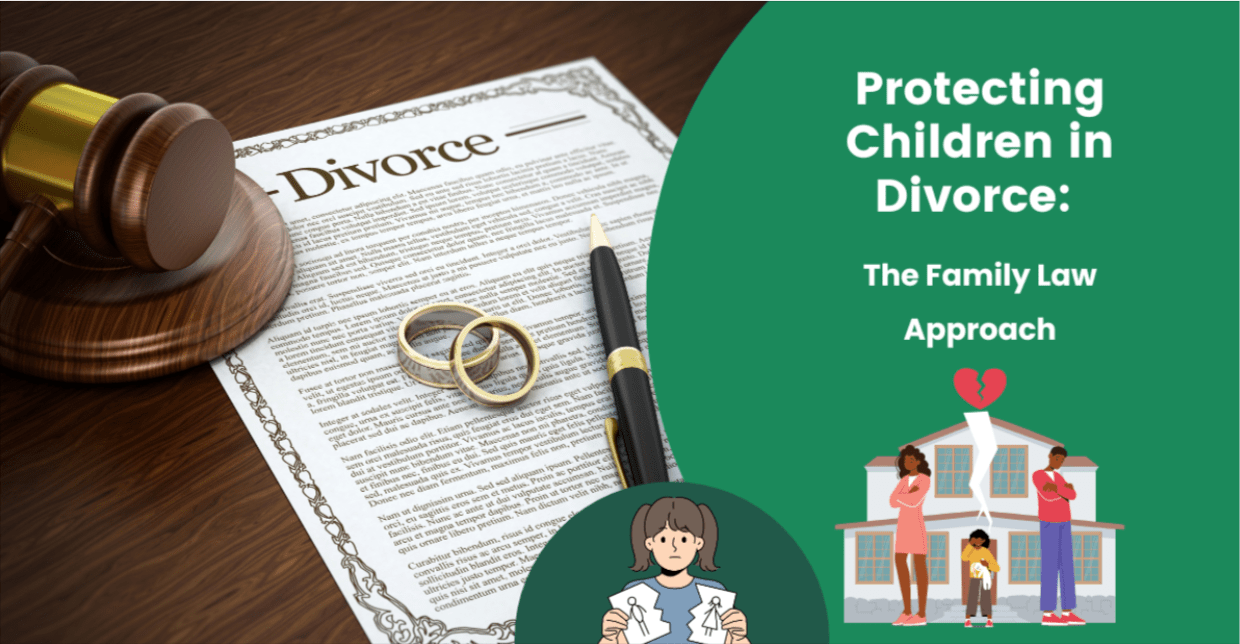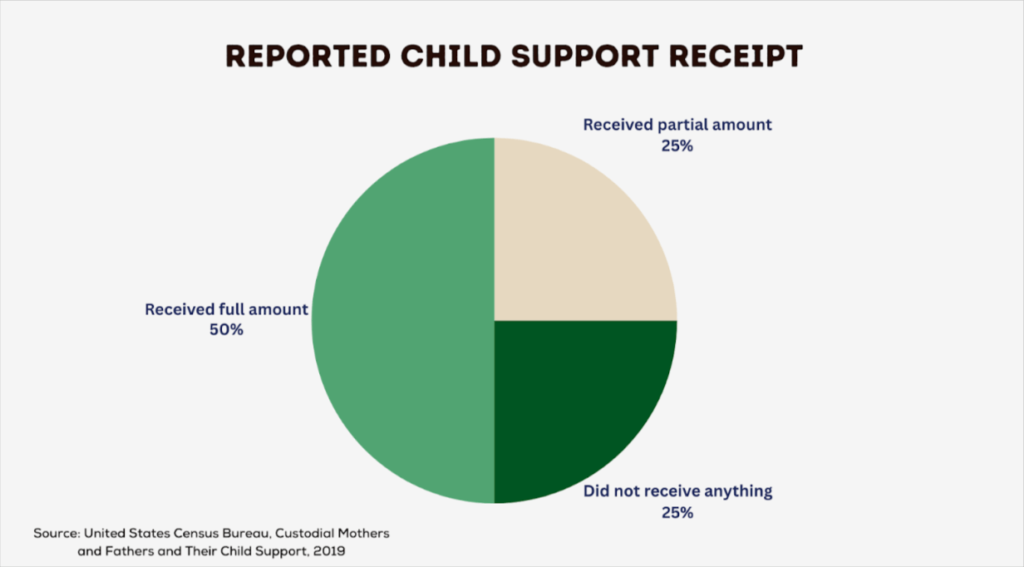
Going through a divorce is really hard for all members of a family, but it’s toughest for children stuck in the middle. Family law plays a key role in keeping kids safe when their parents split up.
By handling issues like custody, visitation, child support money, and protection orders, the court system tries to shield vulnerable young people during this rocky change.
Navigating the complexities of divorce proceedings is crucial to ensure a stable environment for children. Through legal frameworks and interventions, family law strives to establish a fair and nurturing arrangement that prioritizes the well-being of the children involved. This includes addressing emotional needs, maintaining consistent communication, and fostering a sense of stability as they adapt to the new dynamics within their family unit.
The Child’s Best Interest Standard
The “best interest of the child” is the most central rule in family law. According to the American Bar Association, judges place top concerns on things like a child’s safety, health, emotions, and relationships when deciding major divorce cases.
Research by the U.S. Department of Health reveals kids often develop more behavior or mental health issues later on after nasty parental splits. So it’s clear—focusing on what’s best for the children now gives them their best shot at happiness in the future after the dust settles.
Services some family law attorneys in Reno NV provide relating to protecting kids cover: developing comprehensive parenting plans focused on the child’s needs, securing custody agreements in the child’s best interests, assisting with child support calculations to ensure the financial stability of the child, and helping parents mediate a smooth co-parenting relationship post-divorce.

Specifically, family law guides divorce in protecting kids through:
- Custody and Living Arrangements – Courts determine which home environment and parenting schedule promotes healthy development.
- Child Support – Financial backing ensures kids’ financial security despite the marital split.
- Visitation Rights – Preserving relationships with both parents through reasonable access.
- Services Referrals – Connecting families to counseling/services for readjusting to life after divorce With supportive structures in place legally, kids have a safety net when families dissolve.
Factors That Affect Children During a Divorce
- Changed Family Structure: Divorce transforms kids’ entire family structure. Losing their nuclear family is destabilizing. Having to shift between homes with different rules causes major stress. Kids rely on consistency and disruption to their family unit can make them feel unsafe.
- Strong Feelings of Loss: Kids grieve the dissolution of their family. When a parent moves out, feelings of abandonment often occur. Younger kids frequently blame themselves, believing their behavior made parents split. Working through the sadness, anger, and self-blame is crucial for adjustment.
- Adjusting to Different Lifestyles: Adapting to two homes with distinct rules, roles, and schedules is challenging. Splitting holidays and having limited contact with one parent’s side of family demands compromise. Financial instability just compounds the adjustment struggles.
- Parents’ Conflict Level: High parental discord amplifies kids’ distress tremendously. Constant fighting and tension is deeply scarring. Cooperative co-parenting helps kids feel reassured and secure despite the challenges.
- Lack of Support: Access to emotional support is vital for kids during divorce. Holding in feelings damages self-worth. Counselors and open family communication allow safe expression of their inner pain, critical for resilience.
Custody and Visitation Rights
With the child’s best interests in mind, family courts carefully consider custody arrangements and visitation rights. Custody establishes which parent(s) the child lives with, while visitation outlines time spent with the non-custodial party.
Joint custody agreements have been growing in popularity over the years. The Pew Research Center confirms that more fathers want an active, engaged role in their kids’ daily lives post-separation.
Courts recognize the importance of both parents by increasingly awarding joint legal and/or physical custody. According to the *Journal of Marriage and Family*, children with two actively involved parents demonstrate better emotional, behavioral, and social adjustment over those limited to just one parent.
To balance custody and access rights, while keeping the child’s interests firstmost, family courts institute detailed parenting plans and visitation schedules. These legally binding agreements designate living arrangements, spell out visitation days/hours, outline hand-off procedures, clarify financial obligations, and more. By consulting professionals like mediators and social workers, the court develops comprehensive, customized plans reflecting optimal solutions for that particular family.
Child Support Obligations
Along protecting their emotional welfare, family law also safeguards a child’s financial wellbeing after parental separation. The U.S. Census Bureau reports child support payments topped $30 billion in 2019, illustrating the economic importance of this legal obligation.
Federal law requires every state establish child support guidelines based on parents’ incomes and custody shares. So non-custodial parents uphold their financial duties for covering essential everyday costs like food, clothing, shelter, medical bills and education expenses.
For families struggling to negotiate adequate child support terms, family court steps in by calculating payments per state formulas. Judges also monitor compliance, using tools like wage garnishment to enforce orders when necessary. Statistics show over 70% of custodial parents received full or partial child support awards in 2019, providing essential monetary assistance from non-custodial co-parents.
Protective Measures for Children
Along with deciding suitable custody, visitation, and support terms, family courts also protect children’s safety. In high-risk situations involving domestic abuse, violence, neglect or substance addiction, judges limit parental access through orders like:
- Protective Orders – Legally prohibit contact between abuser and victim
- Restraining Orders – Prevent threatening/violent behavior by restricting proximity
- Supervised Visitation – Custody/visitation with court-approved supervision
By restricting unsafe parent-child interactions, backed by law enforcement consequences for violations, these court interventions shield vulnerable kids from further harm.
Support services like restorative justice programs, counseling, and rehabilitation treatment may also be mandated in custodial agreements. Above all, family courts continually review cases and modify orders to uphold the child’s physical, emotional, and developmental interests.
Frequently Asked Questions
How does divorce hurt kids emotionally?
Divorce causes children major stress that can lead to issues like depression or behavior problems. Kids often feel abandoned, blame themselves, and have trouble with the life changes.
Should kids choose which parent to live with during a divorce?
Judges and mediators decide custody, not children. But older kids may share their preference. The court aims to determine the most responsible, involved parent for primary custody.
What if one divorced parent cannot pay child support?
The court assesses each parent’s ability to provide child support. If a financial issue comes up, parents can request the amount be adjusted based on evidence of income changes.
How are parenting time schedules determined?
Mediators and judges design fair schedules focused on the childrens’ best interests and relationships with both parents. Long separations from either parent can be unhealthy for kids.
Can counseling help children cope with parental separation?
Yes, professional counseling gives kids a safe space to process emotions and build resilience through divorce transitions. Especially when parents cannot fully support them alone.
Bottom Line
Divorce takes a heavy toll on all family members, but careful interventions by the justice system offer hope. With child welfare prioritized over parental rights, family law’s multi-faceted approach targets custody, visitation, child support and safety protections benefiting children involved in high-conflict splits.
While certainly no perfect solution, this child-centric legal process aims to secure kids’ best interests for the brightest possible future ahead.



